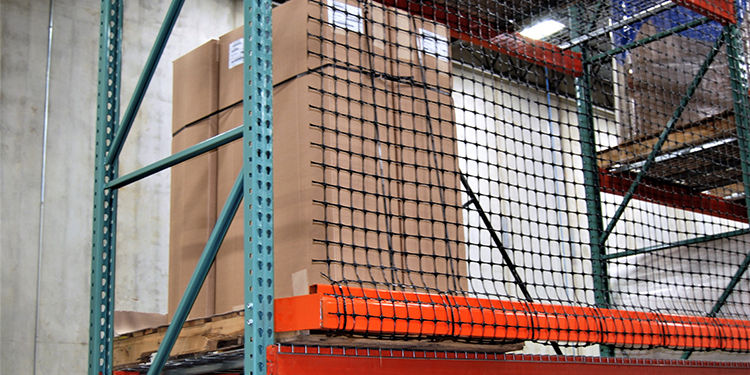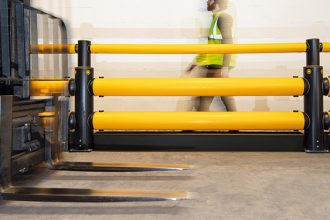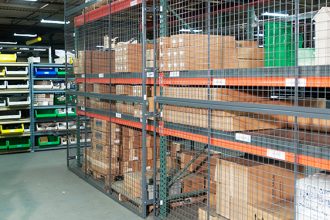The Importance Of Protective Guard Netting For Worker Safety And Product Retention

Lightweight, easy to install and cost effective, protective guard netting — when properly installed — offers protection for both workers and products by retaining and preventing items falling from heights to reach the ground. Also known as “overhead netting” and “safety netting,” it attaches to the columns and beams on the back and sides of one or more spans of rack bays; covers the openings in guardrails on mezzanines, elevated work platforms, pick modules, and stairs; and can be suspended beneath or on the sides of any conveyor.
Protective guard netting is made of a variety of materials, including nylon, polyester, polypropylene, and polyethylene. A range of opening sizes are offered, with smaller openings offering more visual obstruction for a higher degree of product security, while larger openings are easier to see through, facilitating cycle counting and other inventory verification processes.
Once secured according to the manufacturer’s specifications (typically pulled taut and attached every 12 inches with a connector provided by the supplier, industrial zip ties, snap-hooks, carabiners or cable system), and depending on its inherent tensile strength, netting can hold loads ranging from 250 pounds per square foot to 1,400 pounds per square foot. Although contingent on the chosen material and its construction, netting products can capture and retain falling loads weighing up to 7,000 pounds.
Depending on the application and the material used, protective guard netting can be custom sized to fit a specific area of coverage or supplied in a roll. Netting made of woven nylon or polyester materials will have a bound edge to increase the overall strength of the net and provide a point of attachment. Therefore, it is most often supplied in a custom size to meet the unique application’s dimensions. Extruded polypropylene or polyethylene netting can be delivered in pre-cut dimensions or as a continuous roll of material that is cut to the required size on-site during installation.
This guarding solution protects workers and pedestrians by preventing products, totes, cases, boxes and pallets from falling off the sides or back of an elevated structure, potentially striking and injuring a pedestrian at the floor level below. When positioned between back-to-back racking, the netting prevents product migration from one rack to another, as well as keeping items from falling into the flue space. It can also be installed with posts and beams to extend above the top-most level of an industrial steel storage rack structure. This allows an operation to utilize highest storage positions without fear of objects falling, maximizing overhead storage capacity.
Further, protective guard netting can be used to protect personnel from coming into contact with any automated equipment or system systems used within a facility, such as the motors that power the cranes or shuttles of an automated storage and retrieval system (ASRS). Additionally, some operations install netting as a deterrent against pilferage, as damaged, torn, or cut netting provides a visual cue that theft or tampering has occurred.
Finally, different types of netting can be used in various environments, including ambient, cold storage, freezers, and clean rooms. Resistant to water and chemicals (depending on the material), most netting can be used both indoors and outside.
Looking for more information about protective guard netting? Check out the two categories dedicated to this guarding solution in the Protective Guarding Search Tool, published by the members of the Protective Guarding Manufacturers Association (ProGMA): Overhead Mesh Guarding and Safety Netting.



